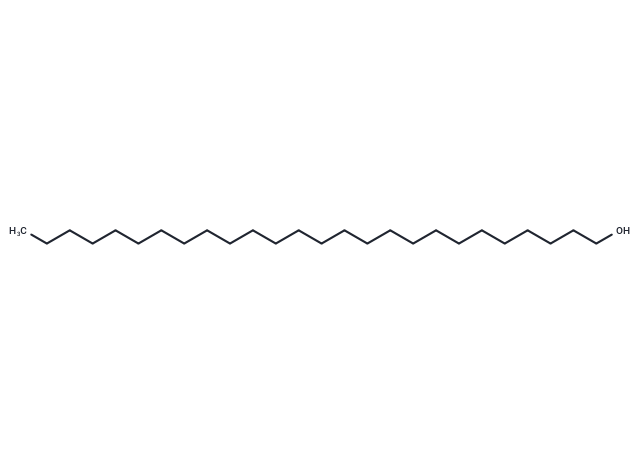Shopping Cart
- Remove All
 Your shopping cart is currently empty
Your shopping cart is currently empty

Hexacosanol activates AMPK and hepatic autophagy and inhibits SREBP2, resulting in hypocholesterolemic activities and improvement of hepatic steatosis.

| Pack Size | Price | Availability | Quantity |
|---|---|---|---|
| 50 mg | $29 | In Stock |
| Description | Hexacosanol activates AMPK and hepatic autophagy and inhibits SREBP2, resulting in hypocholesterolemic activities and improvement of hepatic steatosis. |
| In vivo | Plasma, hepatic cholesterol concentrations and hepatic steatosis were significantly reduced in high-fat-fed mice orally administered with hexacosanol (0.7 mg/kg body weight/day) for 8 weeks compared to those of vehicle-fed control mice (-15 and -40%, respectively)[1]. Diabetes was induced in 8-week-old male Sprague-Dawley rats by administering an intraperitoneal injection of streptozotocin (50 mg/kg). The rats were divided into four groups and maintained for 8 weeks: control rats, diabetic rats without treatment with N-hexacosanol, and diabetic rats treated with N-hexacosanol (2 mg/kg and 8 mg/kg i.p. every day). Although N-hexacosanol failed to modify the diabetic status, increases in serum creatinine as well as in kidney weight were significantly reduced. The malonaldehyde and transforming growth factor beta-1 (TGF-beta1) concentrations as well as the protein kinase C (PKC) activities in the diabetic kidney were significantly higher than those of the control, which were decreased by treatment with N-hexacosanol. Histological examinations revealed that N-hexacosanol significantly ameliorated diabetic-induced tubulointerstitial pathological changes[2]. |
| Molecular Weight | 382.71 |
| Formula | C26H54O |
| Cas No. | 506-52-5 |
| Smiles | CCCCCCCCCCCCCCCCCCCCCCCCCCO |
| Relative Density. | 0.840 g/cm3 |
| Storage | Powder: -20°C for 3 years | In solvent: -80°C for 1 year | Shipping with blue ice. |
| Solubility Information | DMSO: Insoluble |

Copyright © 2015-2024 TargetMol Chemicals Inc. All Rights Reserved.